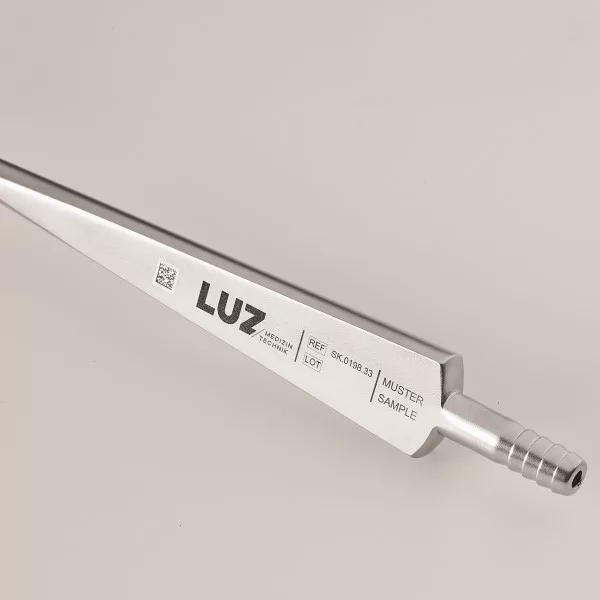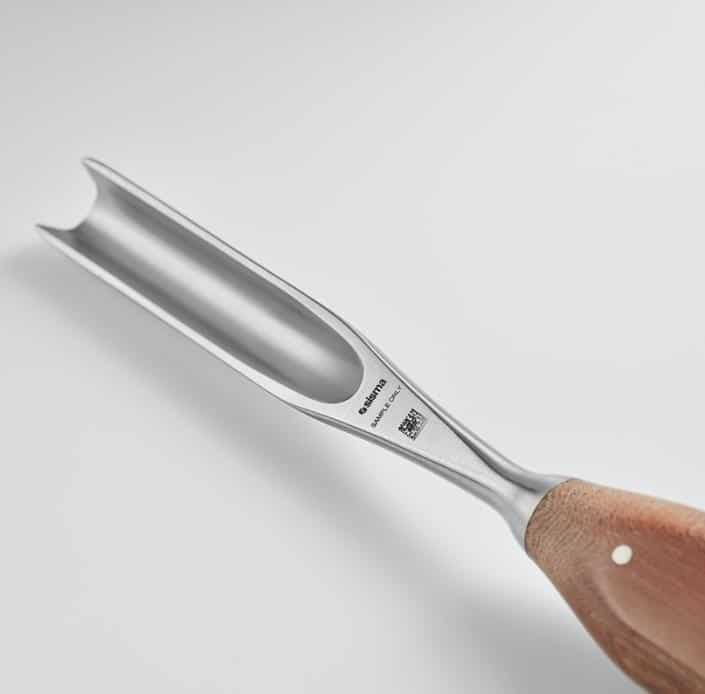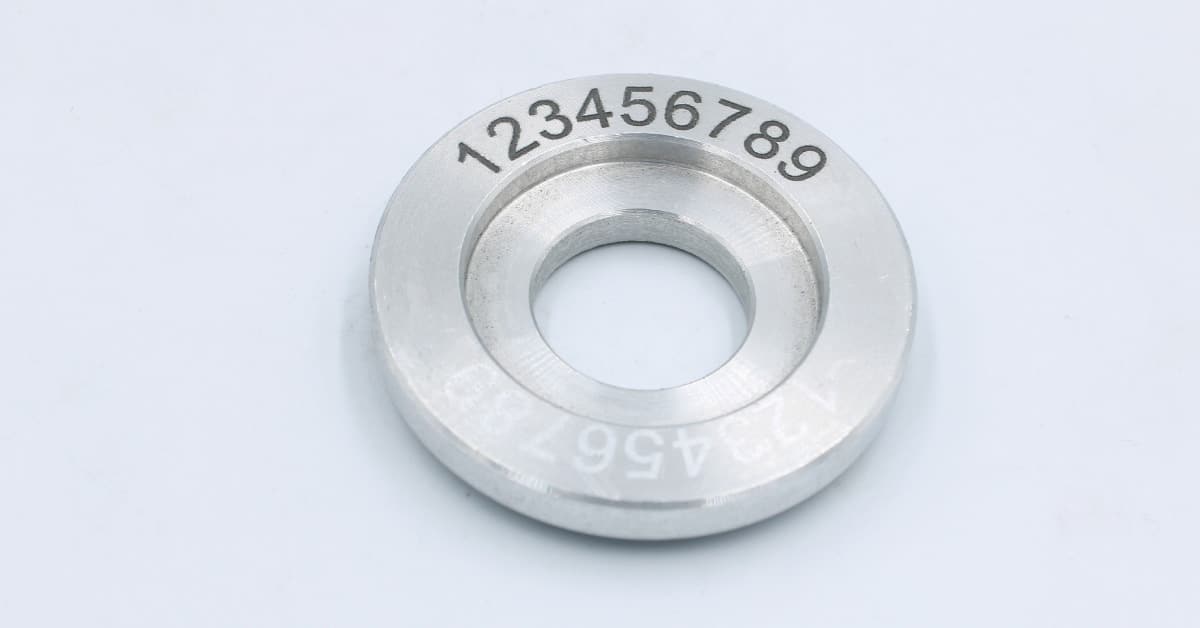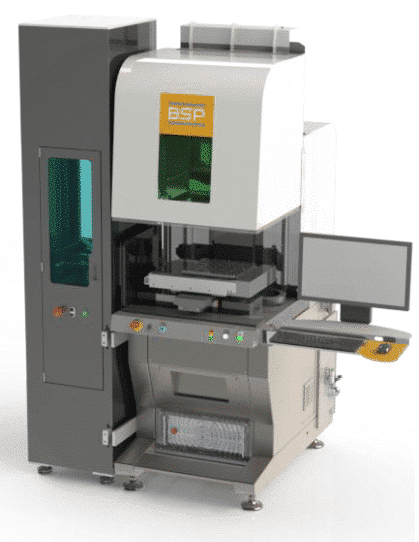In general, laser marking is a permanent mark on a surface created by the interaction of a laser beam focused on the surface. The results can be very different depending on the type of material, more or less reflective, the characteristics of the laser (e.g. wavelength and pulse duration) and the focal length used for the focusing and thus the laser spot.
More detail….
Laser marking can be applied to various types of materials, from plastics to minerals, organic or inorganic, but it is on metals that this technology is at its best. It can also be used to achieve a wide range of aesthetic and functional results.
However, we define marking as a surface modification of the material, i.e. where there is little or no laser penetration. For more substantial penetration, we speak of etching.
If we want to mark steel or anodized aluminum with an imperceptible but permanent and clearly visible blackening (this happens in many applications: for example, where extreme cleanliness is required and therefore even a small roughness could retain bacteria or dirt; or in the case of parts for very precise couplings), we can use a laser with pulse durations in the nanosecond range: the laser simply heats the area to be marked, causing the formation of oxides that give a dark gray coloration, without removing any material.
The coloration can vary according to the temperature reached on the surface and according to the type of metal (see the corresponding article COLORED MARKINGS).
In some sectors, such as automotive, watchmaking and especially medical, marking on stainless steel is often required with more specific characteristics: Surgical instruments, prostheses, medical equipment must be marked with a UDI traceability identification code, alphanumeric codes, barcodes and datamatrix codes, sometimes very small in size, which require a high-contrast, very sharp, legible and corrosion-resistant marking, even after numerous cleaning cycles.
Another important feature is the speed of execution. Compared to a laser with a longer pulse duration (in the order of nanoseconds), the time required to achieve the marking is significantly reduced, thus increasing productivity. Also for other types of metals (titanium, non-anodized aluminum, alloys), it is the best choice.



Our solutions
Sisma supports the needs of the industry by offering stand-alone, versatile, turnkey solutions such as the BSP-Pico and the WH10 automatic loading system for trays.
BSP-Pico is a 3-axis* micromachining system, expandable to 5 axes via a rotary and tilting spindle, fully customizable, equipped (in its basic configuration) with a picosecond fiber laser source (allowing operating repetition rates up to 2 MHz), a galvanic scan head (allowing operating angular rates up to 75 rad/s), and an F-Theta lens (allowing operating working areas up to 180×180 mm, depending on its focal length).
The optional WH-10 is designed for mass production. It can automatically load up to 10 trays with multiple objects. By enabling automatic unattended operation, it maximizes the uptime of the BSP Pico.

CONTACT US
